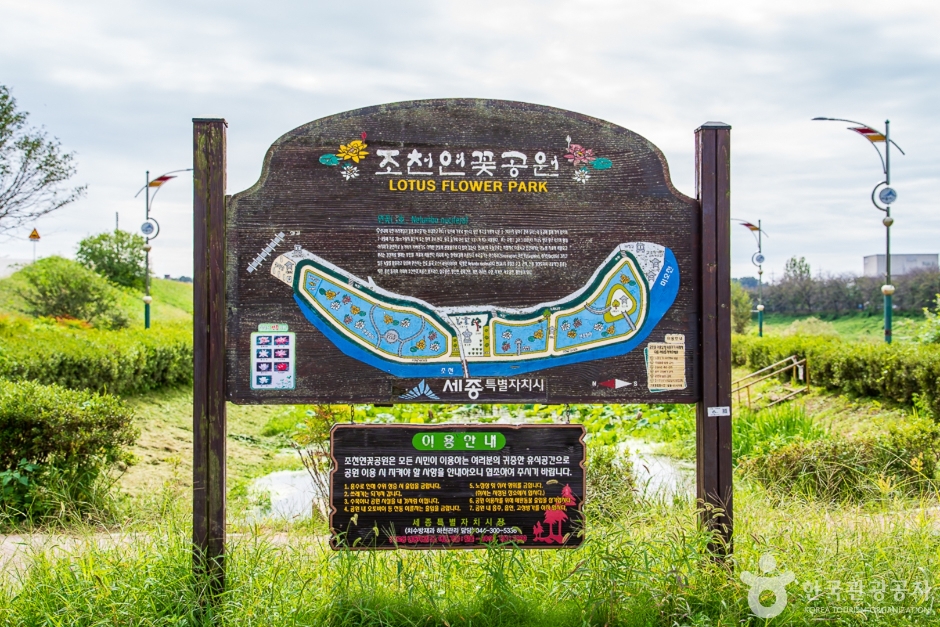Jochiwon Station (조치원역)
19.4Km 2025-05-20
215, Eutteum-gil, Sejong-si
Opened on January 1, 1905, Jochiwon Station is a major hub for trains on the Gyeongbu Line. It also connects Cheongju to the other areas in Chungcheongnam-do. The station underwent expansion and a second story was built on built on May 19, 1999.
The station plaza has a artworks on display and it also serves as a venue various cultural events. The station's location also made it an important transfer point for trains on the Chungbuk, Gyeongbu, Jeolla, and Honam Lines. With the continuous urban development in Sejong City and Osong City, the station is also expected to play a major role in transportation and commerce for the central region.
Jocheon Lotus Park (조천연꽃공원)
19.8Km 2025-05-20
226 Beonam-ri, Jochiwon-eup, Sejong-si
Jocheon Lotus Park is an ecological park established by cultivating white lotus, red lotus, and water lilies on abandoned agricultural land. Developed on former farmland, the park blossoms with vibrant lotus flowers during the summer months of July and August. As visitors stroll along the deck path, they can relish the soothing sounds of Jocheon Stream. The pathway along the Jocheon Riverside is especially scenic in spring, adorned with cherry blossoms, earning it the name Jocheonbyeon Cherry Blossom Path. This provides a picturesque backdrop for flower viewing and photography.


 English
English
 한국어
한국어 日本語
日本語 中文(简体)
中文(简体) Deutsch
Deutsch Français
Français Español
Español Русский
Русский